An explanation of what I'm doing here can be found in my introduction post.
Last week, we took a look at the January 1996 Saturn releases of Wing Arms, NFL Quarterback Club '96, Mortal Kombat II, World Cup Golf: Professional Edition, Darius Gaiden, and Hang-On GP.
Also last week, we took a quick gander at EVERY game released for the Atari Jaguar in 1993: Cybermorph, Trevor McFur in the Crescent Galaxy, Evolution: Dino Dudes, and Raiden.
This time we're entering the multiplatform hellscape that are the February 1996 releases of Street Fighter Alpha: Warrior's Dream, Cyberia, The Horde, Clockwork Knight 2, Defcon 5, College Slam, and Johnny Bazookatone.
**This post is also featured on my site, fifthgengaming.blog, and can be found here.**
----------------------------------------------------------------------------------------------------
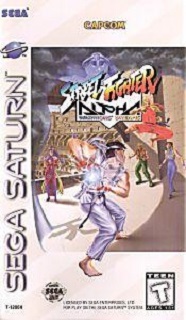
Street Fighter Alpha: Warrior's Dream
Developer: Capcom
Publisher: Capcom
Release Date: 2/6/1996
Time to Beating Bison The Cheap Way: 15 Minutes
We last saw this game not that long ago in part 017 of the PS1 series. We can expect more multiplatform titles to end up with concurrent release dates between the Saturn and Playstation going forward. As such, this is pretty much the exact same game as the PS1 version, and everything I said there applies here as well.
As far as differences go, the load times feel slightly longer on the Saturn, though not so much as to be significant. Conversely, the Saturn version seems to somehow run slightly better in the fights themselves. I can't explain it, but I have the feeling that the sprites animate somewhat more smoothly here than on the PS1. The biggest change is the control scheme. For Street Fighter games, having six face buttons is preferable to having four and two shoulder buttons. The difference is small, but it's there. So, I guess the Saturn version of Street Fighter Alpha is overall slightly superior to the Playstation version. That's probably going to be the case for most, if not all, sprite-based fighting games going forward, but don't hold me to that prediction.
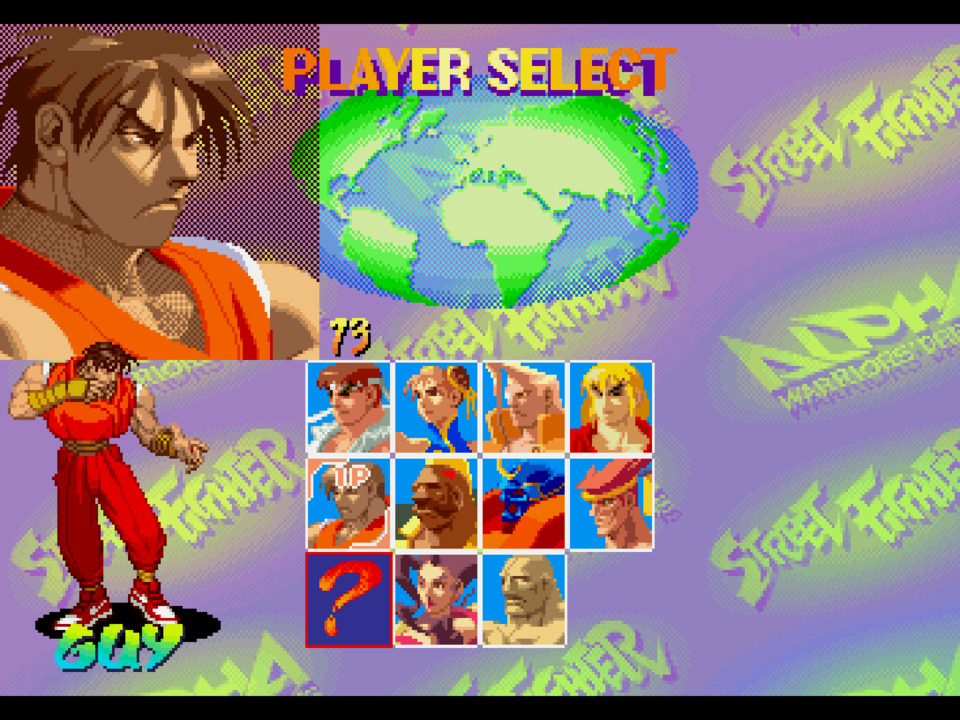
I only played through the ladder once on easy difficulty, just to see how this ran in comparison to the other version. Now that I've sat down and looked at this game a second time, I'm beginning to feel more conscious of all the things I'm missing. Between the special moves, super moves, and all the other gameplay features only accessible at a high level of play, I felt like I was only seeing the smallest fraction of the game. That's part of the thing with fighting games, you see only the smallest sliver of what's going on if you don't put tens of hours into rote memorization and practice. At the end of that road is just the ability to interact with all the features of an otherwise lean video game; at that point the whole reason to care would be for the competitive aspect. That's probably why Fighting games had to invest in increasingly intricate story modes starting in the late 90's. In that respect, Tekken would have been the most important one of these games in the mid-90's.
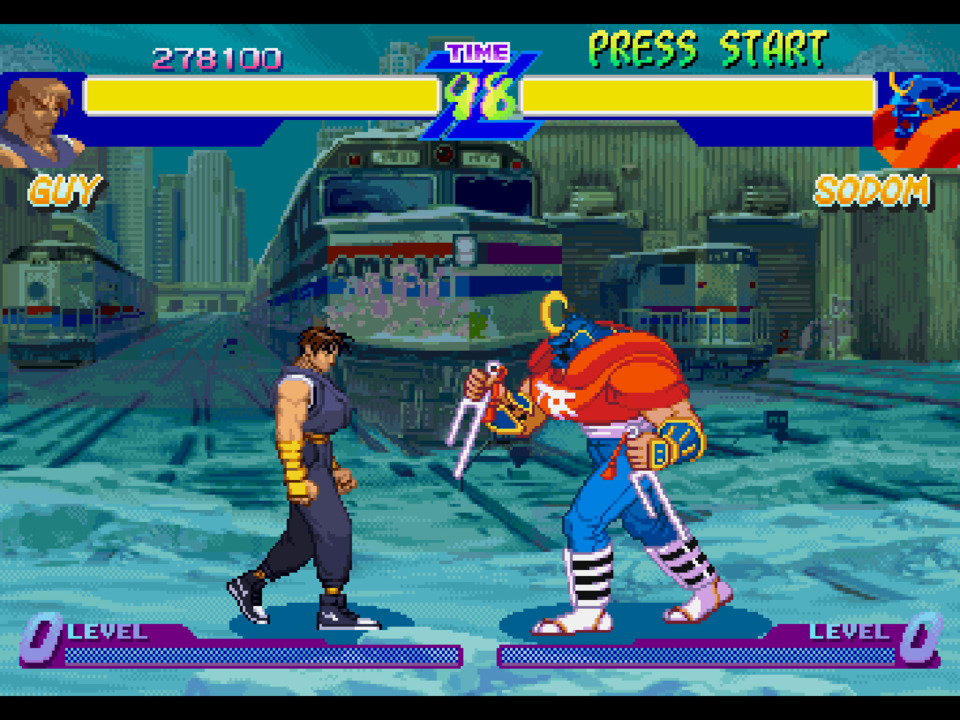
It's also telling that Street Fighter went into dormancy for like eight years between the final demise of arcades and the existence of low-latency net code on consoles. In contrast to something like the Mortal Kombat franchise, which seems to have fully committed towards developing the single player experience, Capcom has never been too keen on putting out anything other than straight, old school Fighting games in the Street Fighter series. That dormant period between Third Strike and IV could be seen as a flaw in their approach, but they probably didn't take that lesson away from it seeing as how the gaps between numbered releases have been that large in the years since. I think what I'm trying to get at is that Street Fighter games are super impenetrable for me and I'm not going to have anything turbo meaningful to say about them.
----------------------------------------------------------------------------------------------------
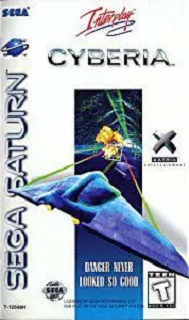
Cyberia
Developer: Xatrix Entertainment
Publisher: Interplay Entertainment
Release Date: 2/8/1996
Time to Walking Away In Disgust: 58 Minutes
Now we have to deal with this crap again. Getting right to the point, there is very little difference between the Saturn and PS1 versions of this game. The only thing I noticed is that the load times seem to be longer for the Saturn. Cyberia still is what it is.
I have a few notes to make about my second go around with this thing. First, that turret section at the beginning is so abjectly terrible. The enemy wave design still feels inept, and apparently if you start taking damage the turret becomes harder to control. Now, sure, that is a way to communicate that you're using a physical thing that can get banged up and take on different characteristics. It also sucks shit as a game experience. Second, I stumbled into a branching path that I didn't know was there. When that merc lady says "kiss me" you can press the action button to say no. Doing this skips the whole getting captured and escape section that was so miserable last time. Instead, I was able to just walk to the plane and get to that first puzzle.
![Defusing the Transfighter - [Rating: Bullshit/10]](https://www.giantbomb.com/a/uploads/scale_super/1/12485/3457362-cyberia%28usa%29%28en%2Cfr%2Cde%29-230327-104420.jpg)
Speaking of which, I was not fortunate enough to quickly stumble into the solution like last time. There's probably a solution that can be deduced using the gadgets, but the information overlays the game provides are the exact opposite of helpful. I still wound-up brute forcing the solution, it just took longer this time. Now, I wound up making it further here than the last time I played, as I had more patience when going into the Rail Shooter section. This whole chunk overstays its welcome with seven whole entire back-to-back missions. I use that phrasing because Cyberia subscribes to the Rebel Assault school of shitty Rail Shooter design. I was still able to get through it, but there was one thing that bothered me. In the first mission, you have a couple second long window at the end of the level to shoot a thingy that has a blue bracket over it. Failing to shoot it in time results in an automatic failure and starting the whole level over again. While that sucks, the truly inexplicable part is that in two of the later levels, that same blue bracket is used to denote stuff that you should not shoot under any circumstances or else it's game over. Inverting the meaning of UI elements can be used effectively in games, but this is not one of those cases, and that probably wasn't even the intention. That's a small point, but it serves as a good example of the amateurishness of the whole package.
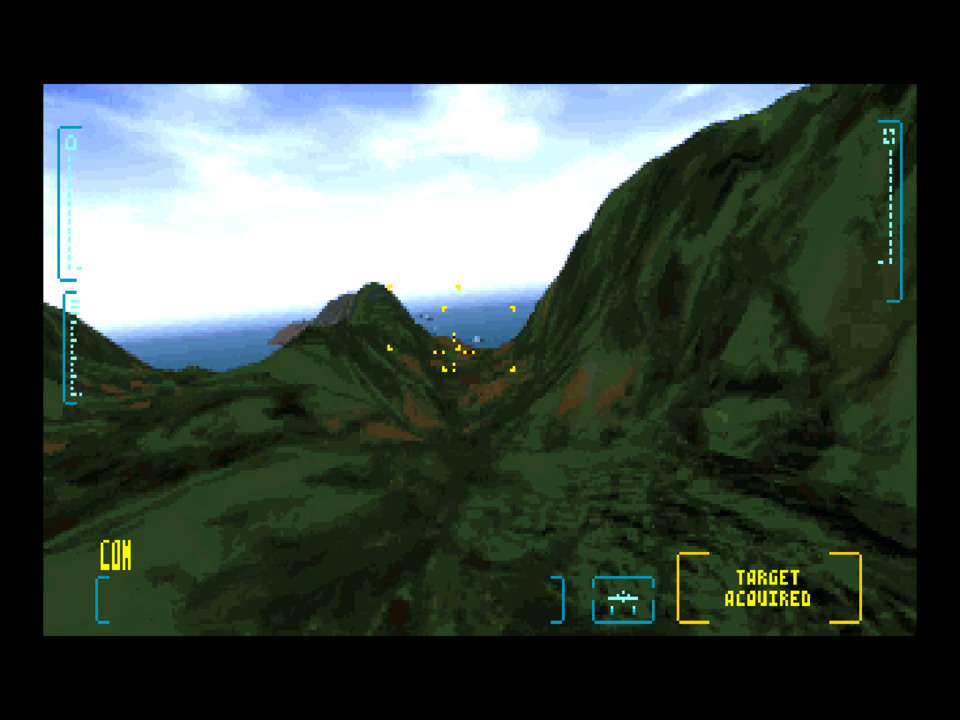
That's probably as good a lens as any with which to view Cyberia. I can see how this game is an evolution on the interactive action movie concept seen in Rebel Assault. But that kind of concept doesn't work under the old pretenses about game difficulty. Making games that can't be finished by most players is necessary for the arcade environment, but it doesn't work at all with interactive fiction. That lesson should have been learned with Night Trap in '92 or Rebel Assault in '93. Though, I guess I need to cut this thing a little slack, since it was originally released in early '94 and we're just now eating the lukewarm leftovers in '96. This stupid thing makes me angry, so let's move on.
----------------------------------------------------------------------------------------------------

The Horde
Developer: Toys for Bob
Publisher: Crystal Dynamics
Release Date: 2/13/1996
Time to Bored Of The Horde: 24 Minutes
I think we're getting close to done with Crystal Dynamics 3DO games being ported to more successful systems. We just have the Slam n' Jam update to deal with, then we'll get whatever fresh torments they have in store. Though The Horde wasn't developed by the Crystal D, they were instead publishing it on behalf of Toys for Bob, for whom I'm willing to cut some slack.
What he have here is a hybrid Town Builder/Action game with some of the most mid-90's FMV you'll ever see. You play as a teenage Kirk Cameron, who is a random idiot that lucks into being put in charge of a fledgling village in a generic parody fantasy setting. The game is structured in turns separated into a town building phase and an action phase. You first have two minutes to build a handful of resource structures, set-up defenses, and harvest available resources. You then play as the main character who has to run around that same town map killing little monster guys who are trying to wreck your stuff. Every four turns you have to pay taxes, which acts as a money check. The village will grow on its own to a certain extent, so the idea is to preserve as much as possible between turns in order to accumulate enough cash for the taxes. Apparently, after a certain number of turns, you get moved to a new area and start over with more options and harder monsters. Do that five times and you win.
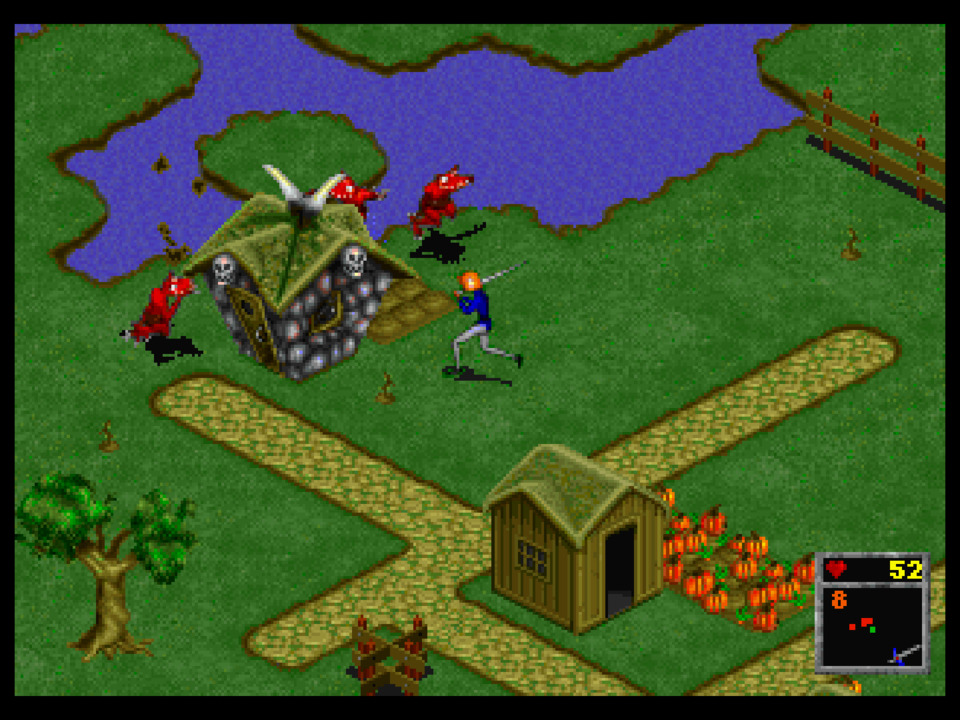
There are semi-permanent upgrades you can purchase after paying taxes, which is also the only time you can save as well. This is the kind of game where having a bad turn won't fail you immediately but will cause you to fail 30 or 60 minutes later, as you fall below the necessary production curve. This would be a really difficult game to balance, and I have no confidence that something released for the 3DO in 1994 got that right. Now, I can't speak to that for certain because I only played through to turn eight before stopping. I mainly did this out of apathy, but also because, due to a twist of fate, I'm going to have to deal with the original 3DO version of The Horde next week. So, I'll do a deeper dive for that version. Oh, also, the FMV cutscenes are significantly less charming than they're trying to be, which contributed greatly to my apathy towards this game.
----------------------------------------------------------------------------------------------------

Clockwork Knight 2
Developer: Sega
Publisher: Sega
Release Date: 2/17/1996
Time to Drowned In The Tub: 90 Minutes
The most significant game of the month for the Saturn is also the first direct sequel to a console exclusive we've seen. I'm not counting the Virtua Fighter games or Crystal D's Eclipse games because some or all of those games were ports. I make this distinction because it signals the start of the second wave of games for these consoles. What I mean by that is Clockwork Knight 2 would have begun development after the first commercial launch of the Saturn in '94. It feels like there's a major difference between games that began development before the piece of hardware they're on hits shelves and games that entered development afterwards. Having final specs, some experience in the system architecture, seeing what everyone else's initial ideas were for the new hardware, and having a better feel for next generation trends are all important in creating improved, innovative, or even just basically functional experiences. From this point on, we can expect original releases for the Saturn to look and feel better than the launch season stuff.
I write all of that optimistically, since this game is mechanically almost identical to the original. In fact, it'll be easier to quickly run through the gameplay differences from the first game than to go through an explanation from scratch. The most noticeable new feature is the playing cards scattered through the levels. If you can touch all four in each level you get one of the highest-level power up, and getting all of them in the game nets you a cheat code. Other than that, the level design is more visually involved, in that the game takes greater advantage of foreground and background switching and gets more use of interacting with 3D objects. Overall, the levels are better designed and less linear than the first game. It's a slight improvement in just about every way. Even the music is better. This game even does something genuinely interesting, with a mechanic where you buy continues using the in-game collectible coins. Those coins respawn even when you have to restart a level, so it's possible to have more than the typical two or three continues that you see in games of this era. I really like that idea, it's the next best thing to not having a lives system at all. Yet, because I'm a terminal downer, the improvement only carries the game from being a kind-of-bad 2D platformer to an ok one. It goes from 2/5 to 3/5, if you will.
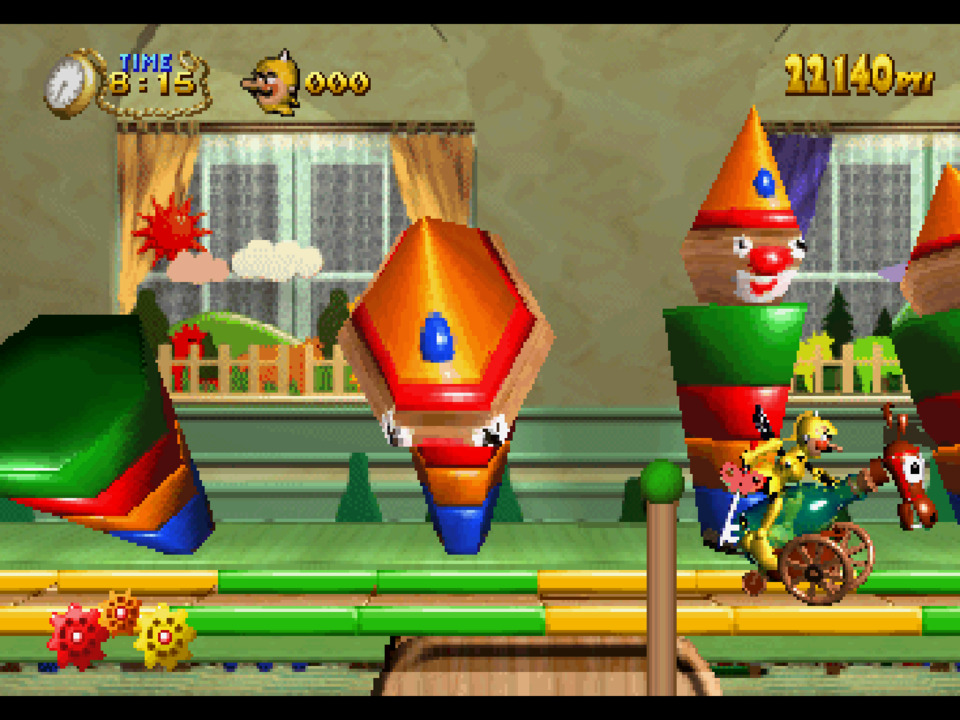
The game touts itself as Part 2 instead of as an independent thing. At least this is an honest self-assessment, because Clockwork Knight 2 has an identical game structure to the first one. There are four zones with two levels and a boss fight each before leading into a final boss. This is just as slight a game as the first, so when this thing refers to the first zone as Room 5, it gives itself a bit more leeway. It's a story in two halves, you see, not two separate half-baked products. If Sega had gotten around to putting out a double feature of these two games together, then we would have something I could recommend almost without equivocation. Yet, here we are, with two separate products that probably would have been a rip-off when they came out.
That was probably the consensus at the time, as this will be the last time we hear from this series. That's a shame, as with a better animation engine and more content I could see a theoretical Clockwork Knight 3 being wholly worthwhile, maybe on a similar tier as the Donkey Kong Country games. It reviewed well at the time, but being a second wave title, this might already be a time when consumers have decided that the Saturn could get stuffed. We're likely going to start seeing a higher concentration of forgotten gems the deeper we go into the catalog.
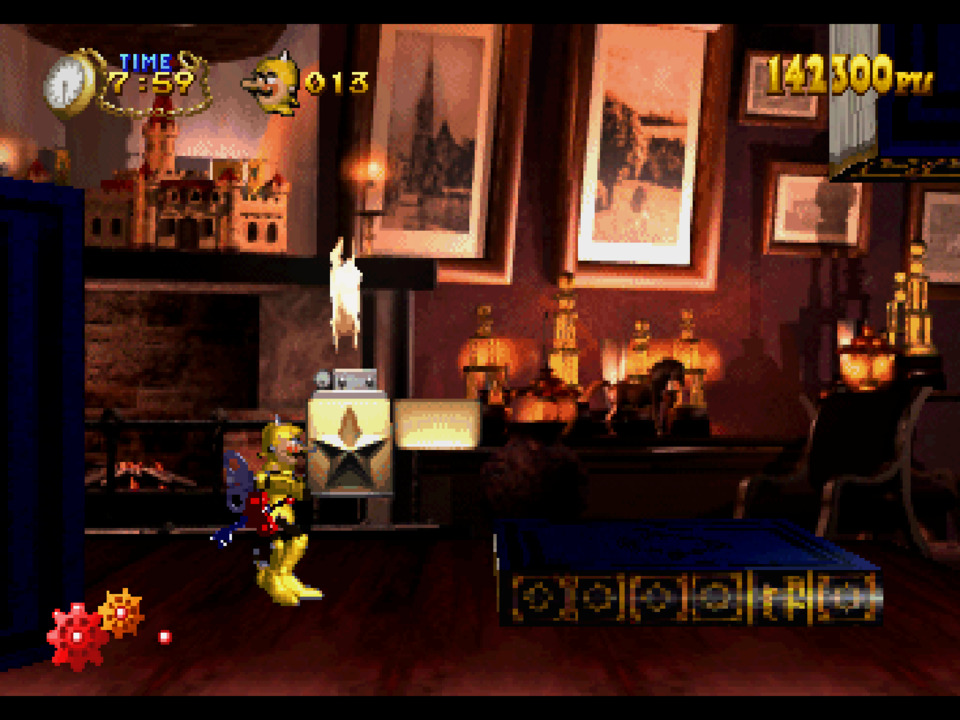
It's also worth taking a moment to consider the Platforming genre as a whole. We haven't talked much about it because there have only been a half-dozen or so in the 123 games we've looked at for the PS1 and Saturn, but that's going to start changing. I have a preconceived notion of 1996 being the year where everyone tried to figure out what 3D Platformers are going to be. That's with full knowledge that Jumping Flash! had already made a good argument for 3D Platforming in '95, but in hindsight we know that concept never went anywhere. We also had Sega make a completely failed attempt with Bug! and a non-attempt with the Clockwork Knight games. We know this uncertainty ends with Super Mario 64, but for now it’s a wild west of design concepts. Just off the top of my head, we're going to see what Crash Bandicoot has in store and the unspeakable atrocity that is Bubsy 3D later in 1996. Evaluating all the different takes on the format will be something I'm looking forward to at the end of '96.
----------------------------------------------------------------------------------------------------

Defcon 5
Developer: Millennium Interactive
Publisher: Data East
Release Date: 2/18/1996
Time to Your Mother Has A Price Ayyyy: 30 Minutes
It's been a while since we've seen this wretched piece of- *cough* totally hot banger. I need to be more positive so that people like, share, and subscribe. Yes, my eye was twitching while writing that. Anyway, this is still Defcon 5 just with slightly worse load times. There's nothing new or different going on in this version, so let's see what more there is to say about the experience after playing most of a second run.
The structure of this game is still incredibly obscure and weird, though not weird enough to compensate for the obscurity. The intro cutscenes don't tell you nearly enough to know what's going on and the invisible timer counting down to everything going sideways doesn’t give you much time to get a handle on anything. This isn't a great experience, and there isn't enough going on to inspire the interest to figure it out. I did survive a lot longer this time, and I was even able to shoot a bunch of aliens before eating it. I think where this thing goes wrong is in the lack of signposting or adequate information on what anything is. This could have been a better game if there were any amount of guidance, or it could have better accomplished the aimless exploration better with interesting visual design and a slower on-ramp for the action. Ah well, all we can do is take what we can from bad games and move on.

Though, before we do so, I've put more thought into the title since last time. Maybe the developer knew that Defcon 5 is the lowest alert level and making that the name was part of the overall commentary against military drawdowns. Mind you, unless there's a twist at the end that commentary is extra shitty. So, if they knew what they were doing, then the title is a sarcastic statement that there's no need for military alertness while being attacked by aliens. The undertones of that are way worse than a simple misunderstanding of the DEFCOM levels, which is why I didn't consider it the first time. After a second run, I feel far less charitable.
----------------------------------------------------------------------------------------------------

College Slam
Developer: Iguana Entertainment
Publisher: Acclaim Entertainment
Release Date: 2/26/1996
Time to Goal Tending: 10 Minutes
We're now back to referencing Part 017 of the PS1 series again. I was not able to notice any discernable difference between the two versions of this game, so there's nothing to say on that end. This is now the fourth time we've looked at a game with NBA Jam gameplay, and I think I'm starting to get somewhat passable (pun intended) at it. Due to this, I am completely out of things to say about the gameplay. I'm not even sure how much overlap there was between college Basketball fans and Saturn owners, so I can't imagine this version sold that much. This is the equivalent to a store brand version of NBA Jam that was likely turned around in a hurry to squeeze any profit out of the NCAA license.
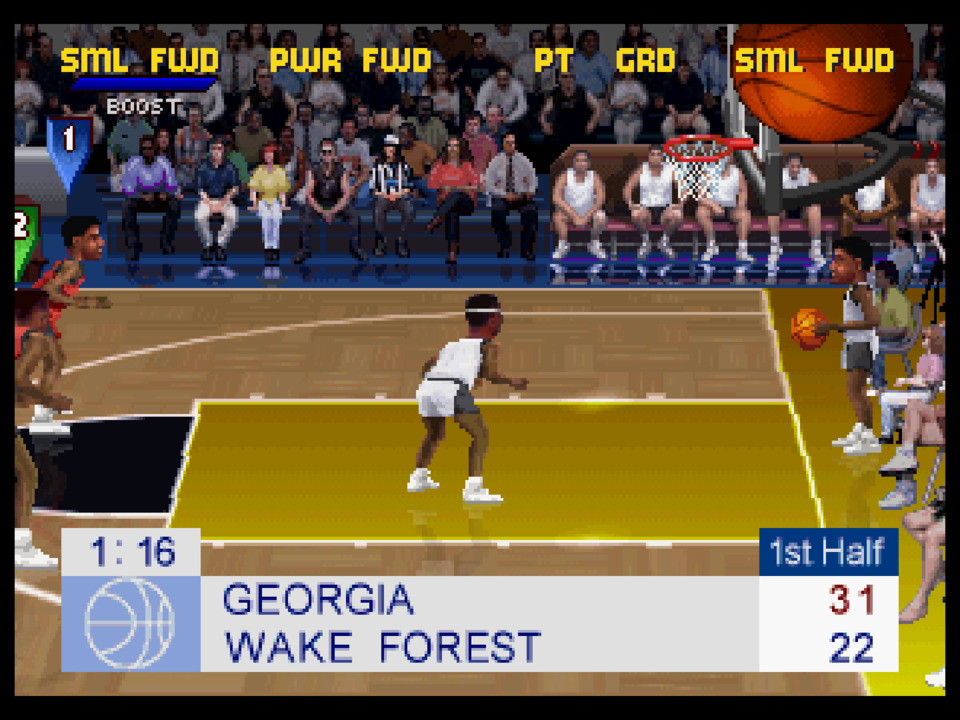
Speaking of the NCAA, the whole business around college sports games was and will be weird. The big thing to consider is that, legally, college athletes are considered amateurs. That makes it so that college athletes cannot be directly paid to perform, being classified as casual enthusiasts. That rule might have made sense in the mid-twentieth century, but it's been an obvious farce for decades, especially at the Division I level. That made things awkward for the roughly 20 period (early-90's to early-10's) of college sports games. As a developer, do you create fake players with fake stats? Or do you create fake players with real stats? Do you give those fake players evocative names as a wink-and-a-nod to the real players? Or do you just use the real likenesses anyway? Using a person's likeness in a piece of media without paying for their consent is usually out of bounds, but the rules around college athletes' likenesses were as grey as the ones for those athletes' legal status. College Slam gave the issue a wide berth, but other games in the future would get sketchy with it. There's much more to say around NCAA Football specifically, but since this is a Basketball game, we'll save that for another time.
----------------------------------------------------------------------------------------------------
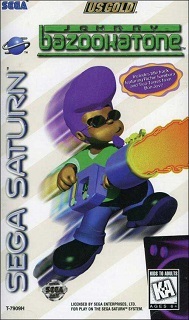
Johnny Bazookatone
Developer: Arc Developments
Publisher: U.S. Gold
Release Date: 2/28/1996
Time to Trapped In Home Hell: 10 Minutes
Arc Developments insisted on giving us one last parting shot before we leave them in the rearview mirror. There is no discernable difference between this and the PS1 version. I played this thing just enough to make sure of that. Here's the thing, I really hate playing this game. You can tangibly feel the tight constraints on time, budget, and skill that probably weighed on its development. If this was some young programmers’ first project that they used to teach themselves game design, then they would deserve a thumbs up and constructive, encouraging criticism. If that nascent developer then put an executable (pronounced "exec-you-ta-ble") around it and sold that as an Amiga or DOS game in their home territory, then that would be fair enough. Instead, this came from a real game studio and the horrible reprobates at U.S. Gold published it on more than one console. I can now say, on further reflection, that this entire project was a mistake and as such I will no longer engage with it.
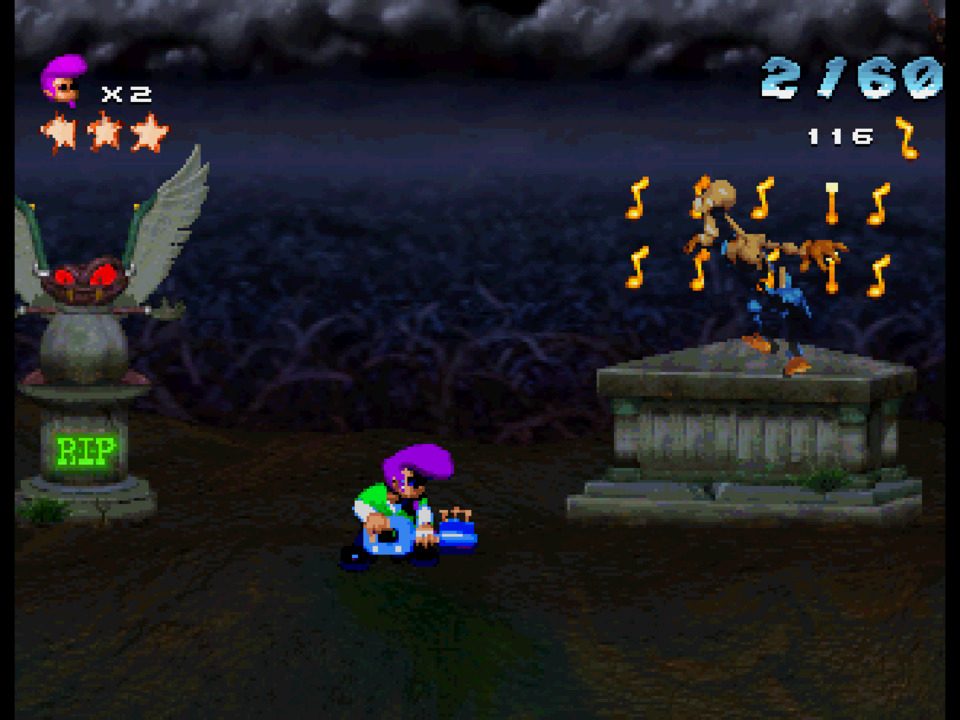
----------------------------------------------------------------------------------------------------
That does it for February '96. This would have been a catastrophic entry in this blog series if it weren't for our boy Pepperouchau. I say that in full knowledge of what's in store for March…sigh. Anyway, let's cram these suckers into the Ranking of All Saturn Games and brace ourselves for what's to come.
1. Panzer Dragoon
…
14. Street Fighter Alpha: Warrior's Dream
15. Clockwork Knight 2
27. The Horde
39. College Slam
46. Defcon 5
54. Cyberia
59. Johnny Bazookatone
…
61. The Mansion of Hidden Souls
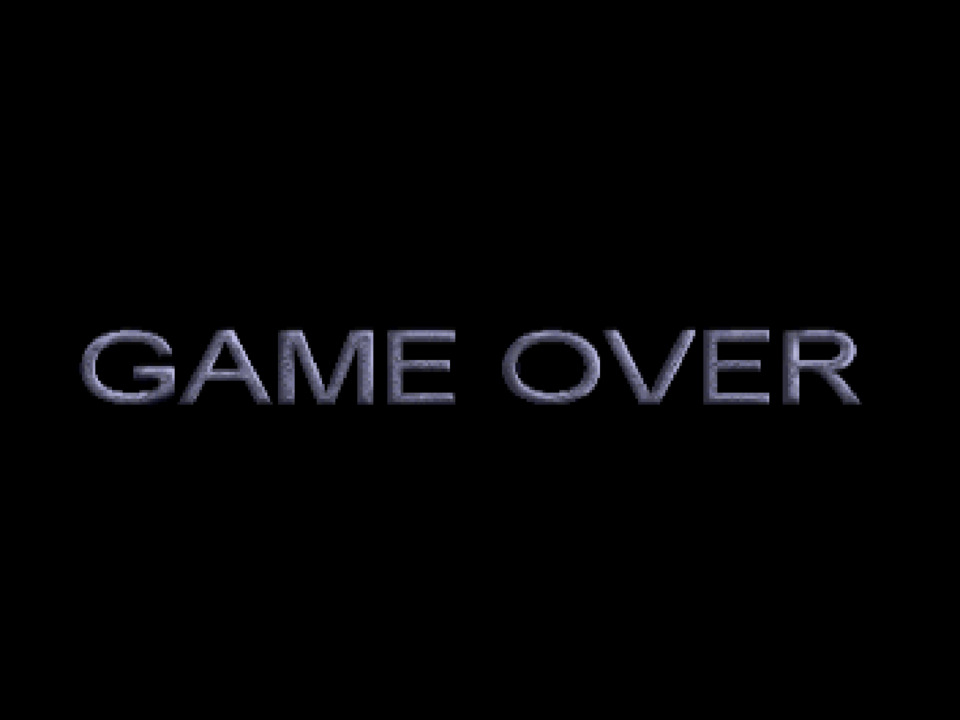
Later this week, I'm going to put out a short Round-Up looking back on the 1993 launches of the 3DO and Jaguar. There are thoughts.
Next week we're going to close out this segment of Saturn games with the hottest bangers when we look at Winning Post, Revolution X, D, Criticom, Battle Arena Toshinden Remix, Magic Carpet, Night Warriors: Darkstalkers' Revenge, and Congo: The Movie: The Lost City of Zinj.
----------------------------------------------------------------------------------------------------
I plan to streamed over on my Twitch channel at https://www.twitch.tv/fifthgenerationgaming. You can watch the archive below.
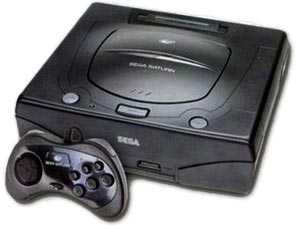
Log in to comment